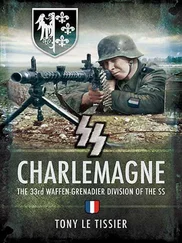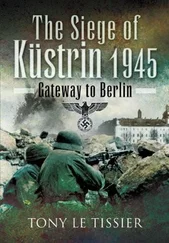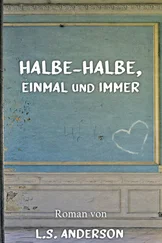The 12th Army hoped to achieve surprise with this attack, but Hitler had issued the following Führer-Order on 23 April, which was distributed in Berlin in leaflet form to boost the morale of the garrison and inhabitants:
To the Soldiers of Wenck’s Army!
An order of immense importance has removed you from your combat zone facing the enemy in the west and set you marching eastward. Your task is clear. Berlin must remain German. The objectives given to you must be achieved whatever the circumstances, for operations are in progress elsewhere to inflict a decisive defeat on the Bolsheviks fighting for the capital and from this the situation in Germany will change completely. Berlin will never capitulate to Bolshevism!
The defenders of the capital have found renewed courage with the news of your rapid progress, and are fighting with bravery and determination in the certainty of soon hearing your guns. The Führer has summoned you, and you have gone forward into the attack as in the days of conquest. Berlin awaits you! Berlin encourages you with all the warmth of her heart. [7] Wenck, ‘Berlin war nicht mehr zu retten’, p. 64 f.
Having redeployed during the previous night, XX Corps launched its attack on either side of the railway leading north-east to Berlin. As there had been no time for a formal reconnaissance, the Ulrich von Hutten Infantry Division in the lead was preceded by a reconnaissance team in eight-wheeled armoured cars with 75-mm guns, motorcyclists and an infantry company in APCs, followed by a vanguard of motorized infantry with some 50-mm anti-tank guns. On its right was the Scharnhorst Infantry Division, and on the far right the Theodor Körner , which was tasked with securing the extending right flank.
At first all went well. The angle of attack avoided the prepared line of defence held by 5th Guards Mechanized Corps and 13th Army along the Wittenberg–Potsdam road (Reichsstrasse 2), and caught 6th Guards Mechanized Corps on an exposed flank. A number of Soviet units were captured intact, including some supply columns and a tank workshop. The young trainees of XX Corps fought with all the elan of the German Army during the first years of the war under their experienced instructors.
During the night the Ferdinand Schill Division came in on the left flank with orders to head for Potsdam. [8] Wenck, ‘Berlin war nicht mehr zu retten’, pp. 65–6; Gellermann, Die Armee Wenck , pp. 83–7; Tieke, Das Ende zwischen Oder und Elbe , p. 331.
Marshal Koniev badly wanted 4th Guards Tank Army’s 10th Guards Tank Corps to meet the threat posed by the advance of 12th Army on Berlin but, much to his annoyance, it remained fully committed in bottling up General Reymann’s Army Detachment Spree on the Wannsee and Potsdam ‘islands’. As Koniev himself admitted, a force of 20,000 men could not simply be ignored. [9] Koniev, Year of Victory , pp. 179–80.
However, he says remarkably little about this day in his memoirs, presumably preferring to forget what must have been in fact a serious rebuff.
Meanwhile 13th Army’s 24th Rifle Corps had been detached and, since its 395th Rifle Division was already in the Golssen–Baruth sector, 117th Rifle Division (102nd Rifle Corps) assumed the all-round defence of Luckenwalde, and 280th Rifle Division (27th Rifle Corps) was stationed as corps reserve in the Jüterbog area. This deployment was so arranged that the Soviet units could engage either the 9th or the 12th German Armies. [10] Lakowski/Stich, Der Kessel von Halbe 1945 , p. 66.
There appears to have been a major break-out attempt that night. Whether or not it was authorized by General Busse remains unclear, but it seems that elements of V, V SS Mountain and XI SS Panzer Corps were involved. [11] Wilke, Am Rande der Strassen , p. 54.
One group of infantry with artillery pieces and transport in train reached as far as the western outskirts of Freidorf, the village in which the headquarters of 1st Guards Breakthrough Artillery and 389th Rifle Divisions were located, before they were stopped by 5th Battery, 203rd Guards Howitzer Artillery Regiment, at a range of 150 metres. Some of the gunners had to resort to their carbines and sub-machine guns to defend themselves. The battery later claimed to have killed 90 Germans as well as destroying a 150-mm gun, a four-barrelled rapid-firing anti-aircraft gun, and six trucks. The rest of the regiment engaged more German infantry 300 metres north of Freidorf. The Germans retreated with heavy losses but then counterattacked and re-entered the village before being finally beaten off in this bitter encounter. [12] Domank, ‘The 1st Guards Breakthrough Artillery Division at Halbe’.
The 1st Byelorussian Front’s 3rd Army was instructed to have its 40th Rifle Corps attack in the direction Mittenwalde–Motzen that day, occupy the the sector Brusendorf–Motzen–Pätz and establish contact with the troops of 1st Ukrainian Front. Its 35th Rifle Corps was to advance towards Pätz and its 41st towards Prieros, and they were then to occupy the Gross Köris–Prieros sector. The 2nd Guards Cavalry Corps was to thrust towards Märkisch Buchholz and, with 69th Army operating in the centre with its right flank against Görsdorf–Streganz, was to occupy the sector Prieros–Schwerin–Behrensdorf. Finally, 33rd Army had to deliver the main blow in the Beeskow–Kehrigk direction, with a subsidiary blow on the left flank towards Gröditsch.
Meanwhile some 1,500 Soviet bombers, ground-attack aircraft and fighters were tasked with supporting their own troops, preventing 9th Army from manoeuvring, smashing German concentrations in the woods and at the Spree and Dahme crossing points, preventing resupply by air, and conducting aerial reconnaissance. [13] Lakowski/Stich, Der Kessel von Halbe 1945 , pp. 66–8.
Both fronts used pamphlets and loudspeakers to try to persuade the German troops to give up the fight and surrender, thus saving themselves casualties, but these efforts proved mainly ineffective, the determination of the Germans to escape Soviet captivity and break out to the west being far too strong, even among stragglers from shattered units, whether still armed or not. [14] Ibid ., p. 68.
An SS-second lieutenant with Battlegroup Becker reported:
We reached Prieros at 1000 hours on 26 April and took up positions in front of the town, then set off again that afternoon for Hermsdorf. Supplies were already short but there was enough ammunition available. There were often unpleasant incidents. Wounded and civilians all wanted to be taken along with us even when they could hardly move themselves.
The night was cold and the sentries were often unable to distinguish friend from foe. The Prieros–Streganz road was blocked during the night. It began to rain as we lay without cover in the necessary positions, Russian mortaring being very heavy. We often had the feeling that Ivan knew exactly where we were. The men were completely exhausted, and I and an Army second lieutenant spent the night checking the sentries, coming across sentries who had fallen asleep. We had a cursory roll call: there were still 74 men of the old company, 43 from the 2nd Battalion/88[th Grenadier Regiment], and over 30 men from other units. Some were already wounded, but everyone knew that we would only get out if we stayed together.
An SS-captain from Wagner’s staff [Division Nederland ] found us, bringing an urgent request for us to hold out at all costs! There were not only us soldiers but, above all, women and children in the pocket. [15] Wilke, Am Rande der Strassen , p. 83.
Ernst-Christian Gädtke continues his account:
Читать дальше












